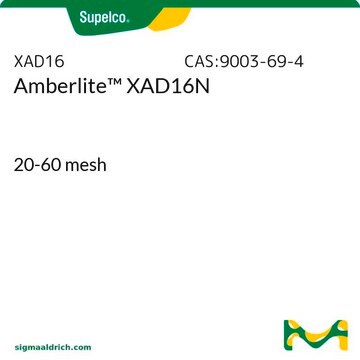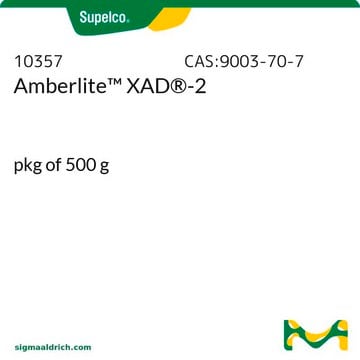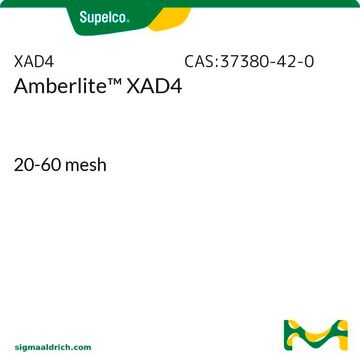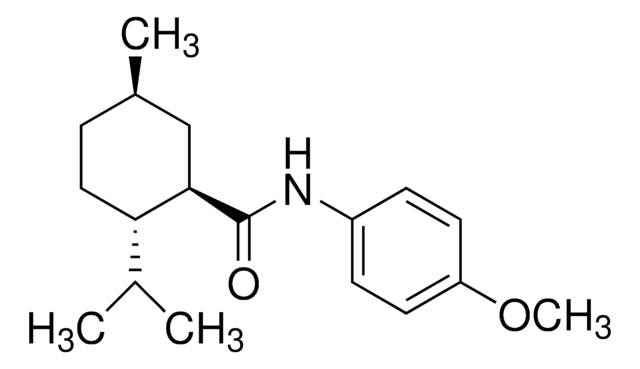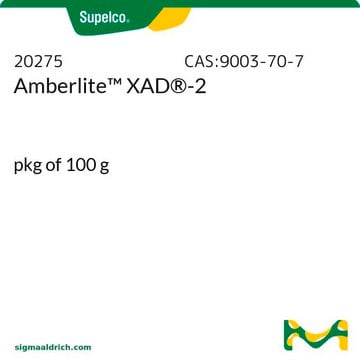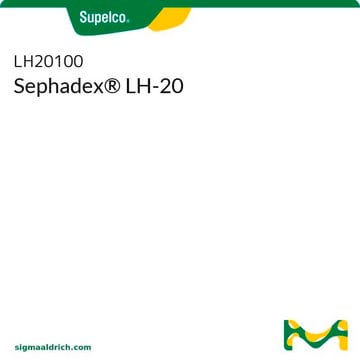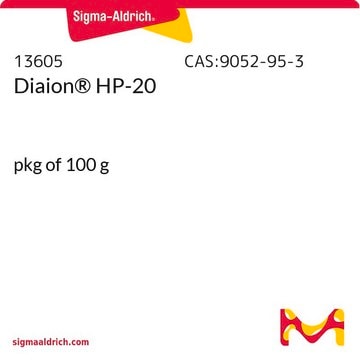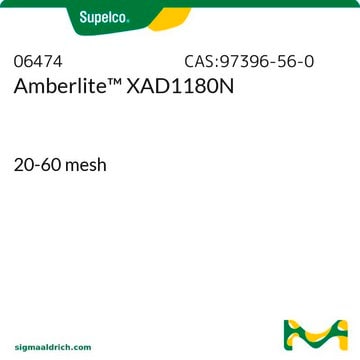XAD7
Amberlite™ XAD7HP polymeric adsorbent
20-60 mesh
Synonym(e):
weak anion exchange resin
About This Item
Empfohlene Produkte
product name
Amberlite™ XAD7HP, 20-60 mesh
Dampfdichte
<1 (vs air)
Dampfdruck
17 mmHg ( 20 °C)
Form
beads
Selbstzündungstemp.
800 °F
Methode(n)
LPLC: suitable
Oberflächenbereich
380 m2/g
Matrix
acrylic
Aktive Matrixgruppe
polymer
Partikelgröße
20-60 mesh
560-710 μm
Porengröße
0.5 mL/g pore volume
300-400 Å mean pore size
Trenntechnik
reversed phase
Suchen Sie nach ähnlichen Produkten? Aufrufen Leitfaden zum Produktvergleich
Verwandte Kategorien
Allgemeine Beschreibung
Anwendung
Sonstige Hinweise
Mesh 20-60 ist Kat.Nr. XAD7
Mesh 20-50 ist Kat.Nr. 06445
Rechtliche Hinweise
Lagerklassenschlüssel
11 - Combustible Solids
WGK
WGK 3
Flammpunkt (°F)
Not applicable
Flammpunkt (°C)
Not applicable
Persönliche Schutzausrüstung
Eyeshields, Gloves, type N95 (US)
Analysenzertifikate (COA)
Suchen Sie nach Analysenzertifikate (COA), indem Sie die Lot-/Chargennummer des Produkts eingeben. Lot- und Chargennummern sind auf dem Produktetikett hinter den Wörtern ‘Lot’ oder ‘Batch’ (Lot oder Charge) zu finden.
Besitzen Sie dieses Produkt bereits?
In der Dokumentenbibliothek finden Sie die Dokumentation zu den Produkten, die Sie kürzlich erworben haben.
Unser Team von Wissenschaftlern verfügt über Erfahrung in allen Forschungsbereichen einschließlich Life Science, Materialwissenschaften, chemischer Synthese, Chromatographie, Analytik und vielen mehr..
Setzen Sie sich mit dem technischen Dienst in Verbindung.